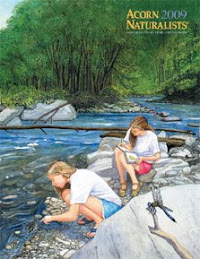 When teachers or kids know they are scheduled for my science class, one of the questions I always hear is "Are we going outside?" It's interesting that learning outside is so novel. I think it is the best place to teach a lot of our science curriculum. Lately, students and I were studying the weather and I challenged them to design and build a weather vane. We had talked about how people used to be able to forecast the weather by looking at weather signs -- the direction of the wind, the look of the clouds, the feel of the temperature. They didn't need to tune into a TV weather report and hear from the meterologist. Checking the weather was something we knew how to do ourselves.
When teachers or kids know they are scheduled for my science class, one of the questions I always hear is "Are we going outside?" It's interesting that learning outside is so novel. I think it is the best place to teach a lot of our science curriculum. Lately, students and I were studying the weather and I challenged them to design and build a weather vane. We had talked about how people used to be able to forecast the weather by looking at weather signs -- the direction of the wind, the look of the clouds, the feel of the temperature. They didn't need to tune into a TV weather report and hear from the meterologist. Checking the weather was something we knew how to do ourselves.In building the weather vane, we went outside to check the direction of the wind. Students held up their weather vanes and the vanes all pointed the same direction! We checked our compass (which they learned to read) and we found out the cold winter wind was blowing in from the north. Brrrrr! Then some students began to test their weather vanes by turning them the opposite direction to see if they stayed that way and they blew right back where they were originally. The excitement of that discovery was awesome! The kids tested and retested their weather vanes. We had so much fun. Now you can see why they ask me-- "Are we going outside?" And when I answer, "YES!" You should see their happy faces!















